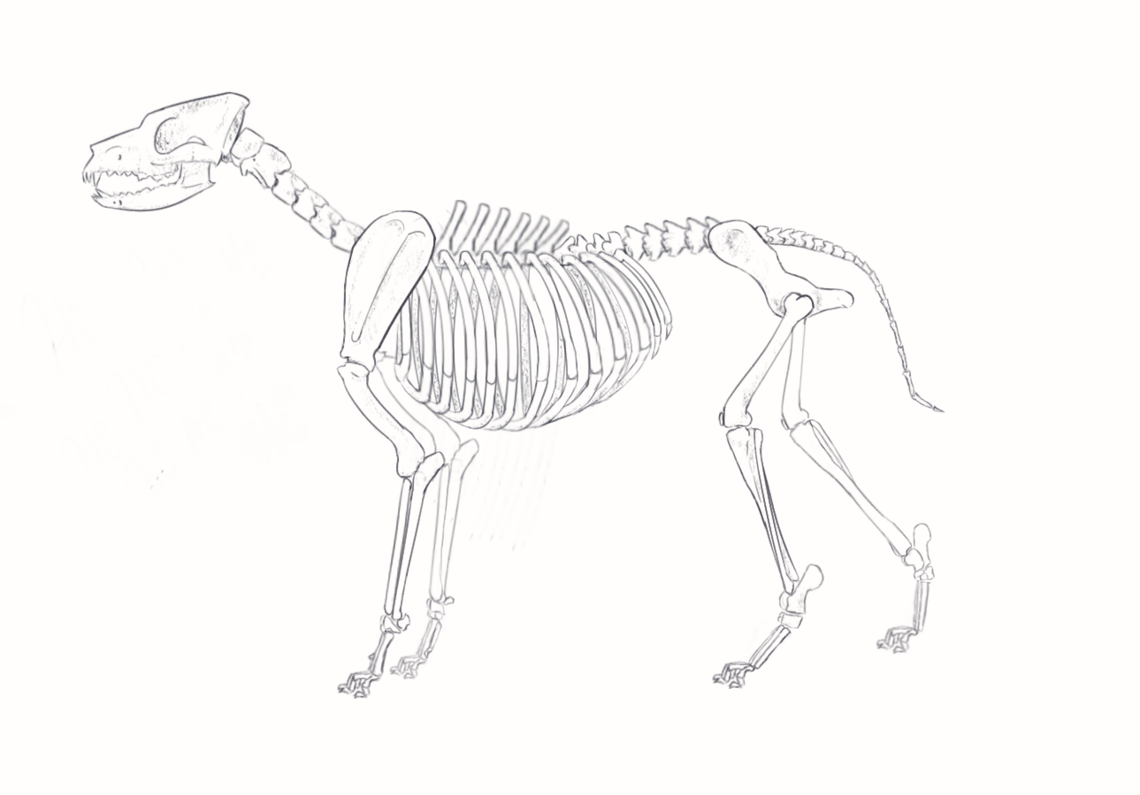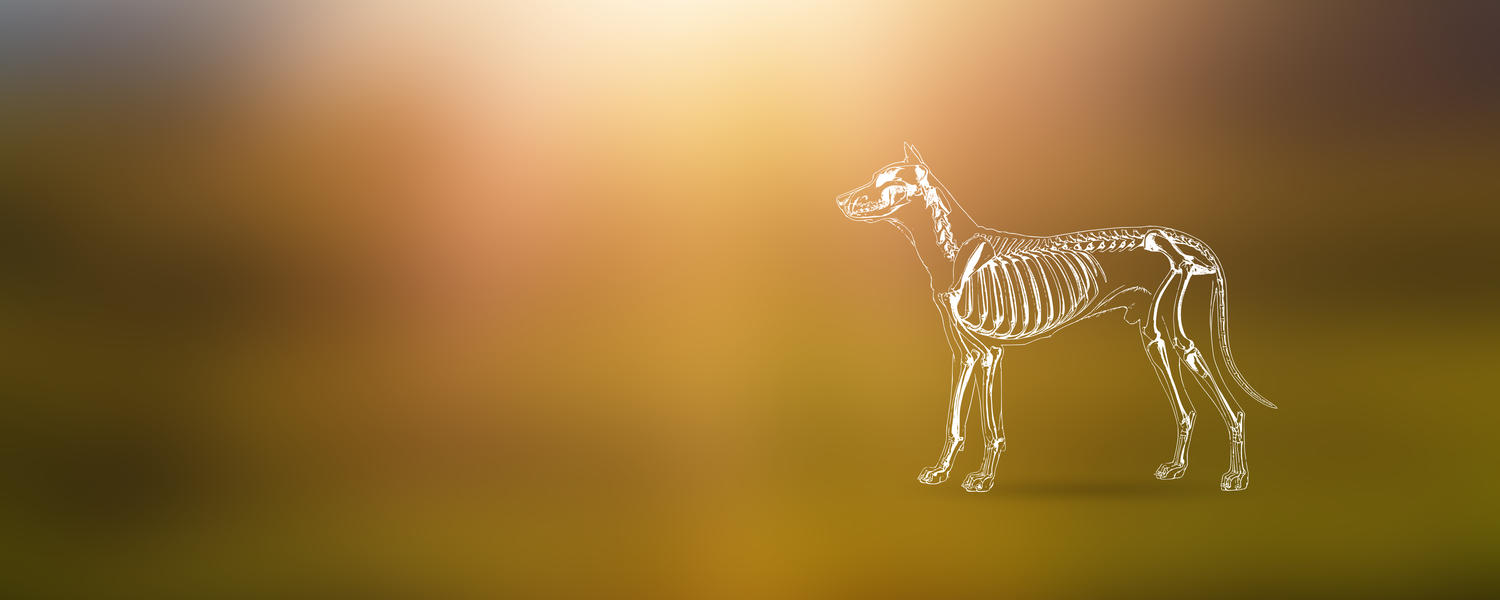
Anatomy: Dogs & Cats
Canine Muscles
Canine (Sûga) Forelimb (Îthto)
The pectoral girdle has no bony linkage to the body and is only attached by a group of muscles (Ka). Like humans, dogs also have a biceps muscle and a triceps muscle. The biceps muscle causes flexion at the elbow joint (Huhu kokîheyabi), while the triceps muscle causes extension. Fun fact: The triceps muscle is named so because it has three parts in humans. However, the dog’s triceps muscle has four parts.
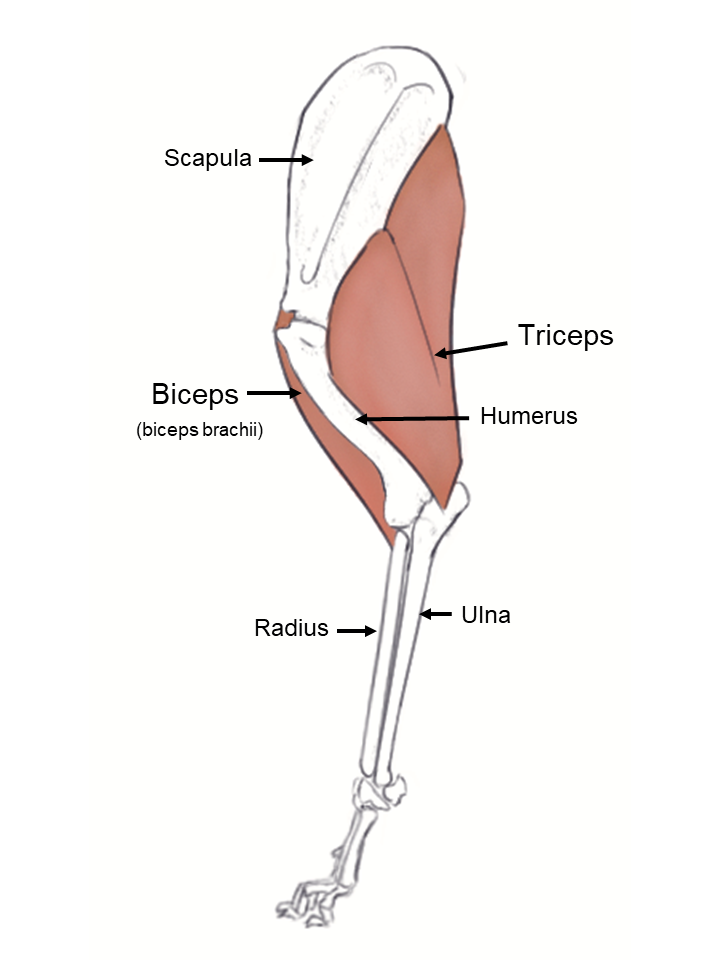
Canine (Sûga) Hindlimb (Cheja)
Unlike the pectoral girdle, the pelvic girdle has a bony linkage to the axial skeleton (Wîchasta tachâ huhu) via the femur and pelvis. Again, like humans, dogs have a group of muscles (Ka) on the back of the leg (Cheja) called the hamstrings and on the front of the leg called quadriceps. The hamstrings cause flexion at the knee joint (Huhu kokîheyabi), while the quadriceps cause extension.
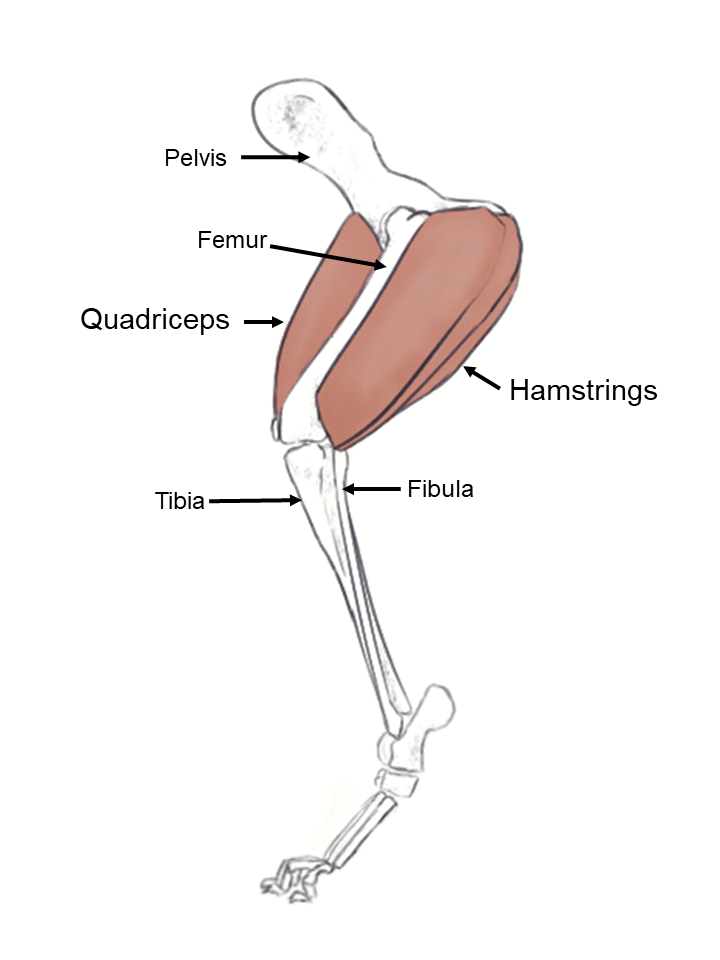
Canine Skeleton
The canine skeleton (Wîchasta tachâ huhu) is divided into two regions: the axial skeleton and the appendicular skeleton. The axial skeleton consists of the vertebral column and the rib cage. The appendicular skeleton consists of the pectoral girdle/limb and the pelvic girdle/limb. The vertebral column is a chain comprised of a varying number of vertebrae. Dogs have 7 cervical vertebrae, 13 thoracic vertebrae, 7 lumbar vertebrae, 3 sacral vertebrae, and 20-23 coccygeal vertebrae. The vertebral column has 3 functions: protection of the spinal cord, weight bearing and muscle insertion, and movement.
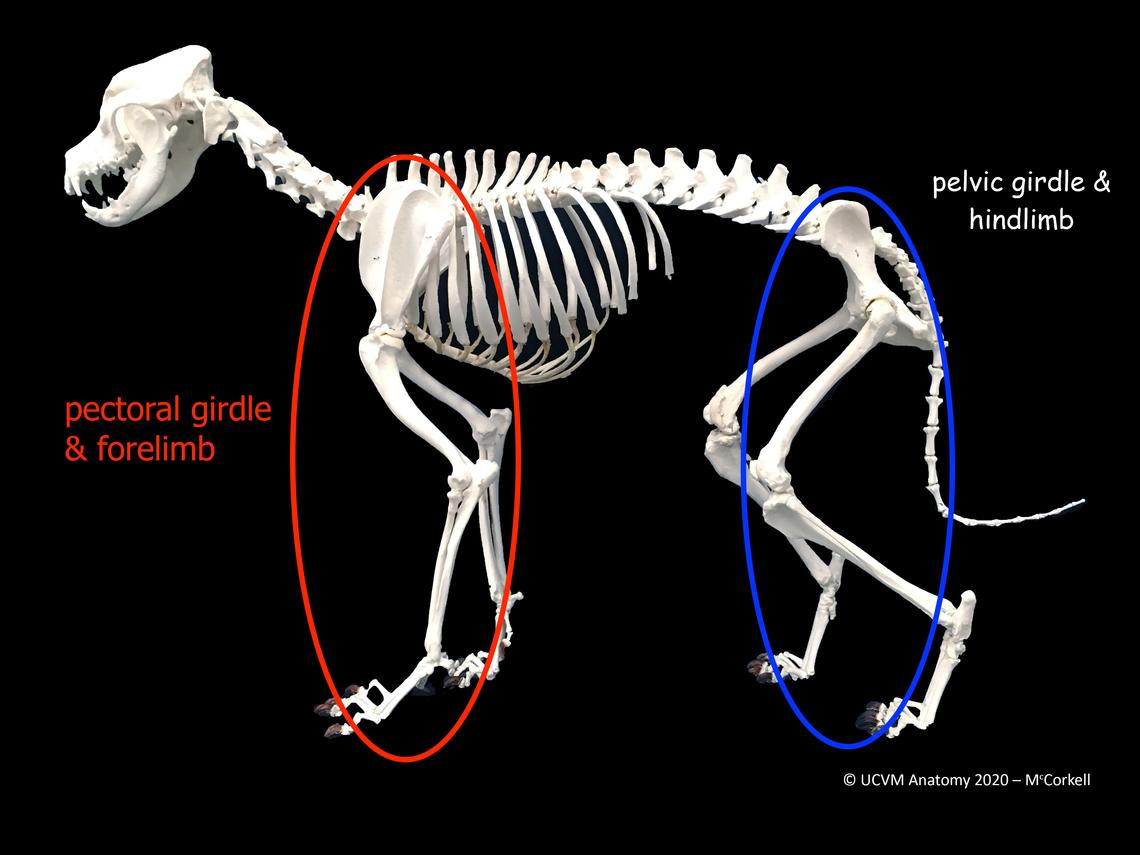
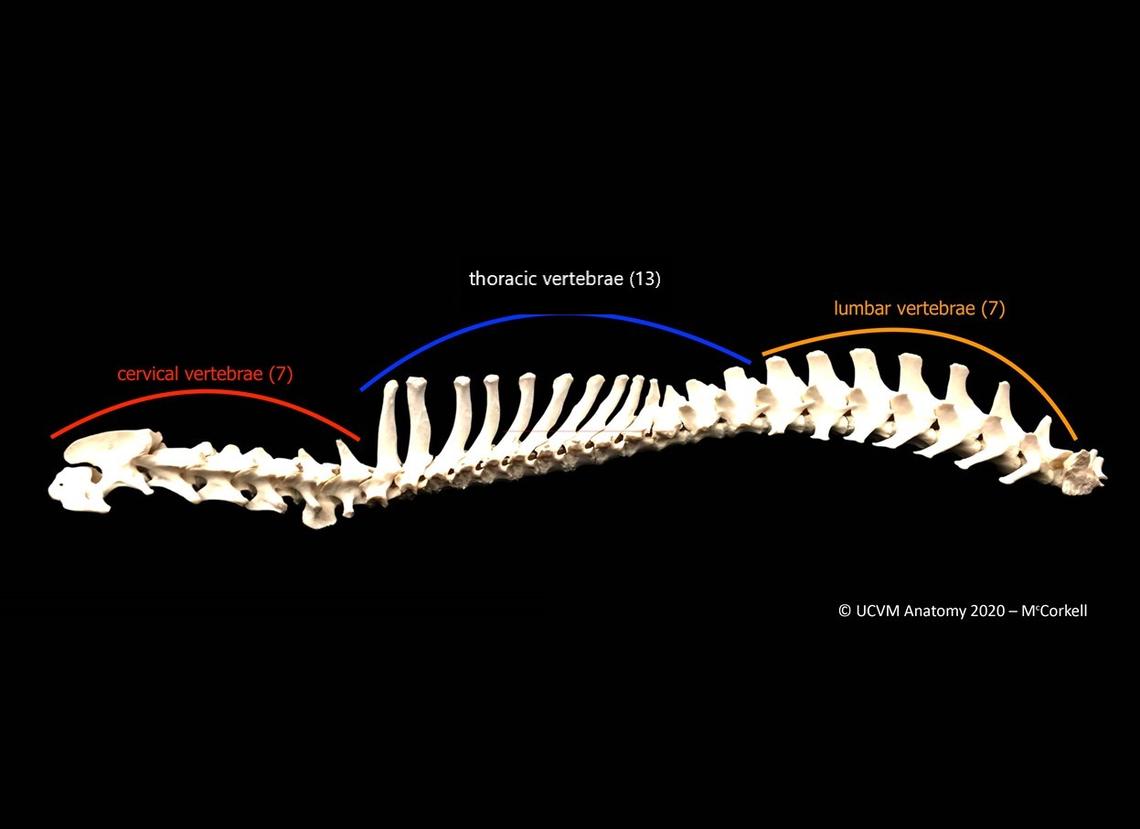
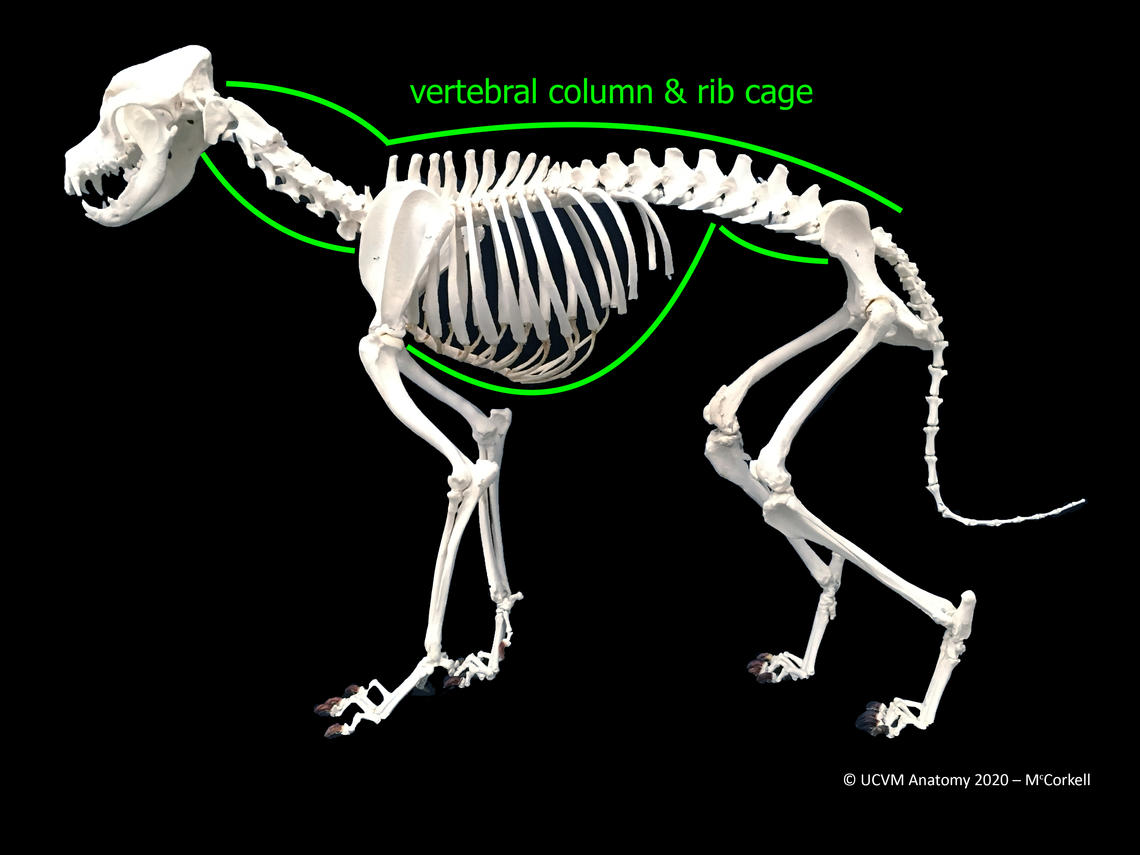
The Central Nervous System
The central nervous system (CNS) consists of the brain and the spinal cord. The CNS controls most of the functions of the body including things like movement, planning and much more! The brain (Ta nâthun) is the portion of the central nervous system that is contained within the skull (Pa huhu). The cerebrum forms most of the brain and helps to perform the higher functions of the nervous system. It contains the frontal lobe, parietal lobe, temporal lobe and occipital lobe. The cerebellum is the part of the brain that moderates reflexes that coordinate voluntary movements
TEST YOUR KNOWLEDGE!!
Can you name the major bones in the dog skeleton below?
